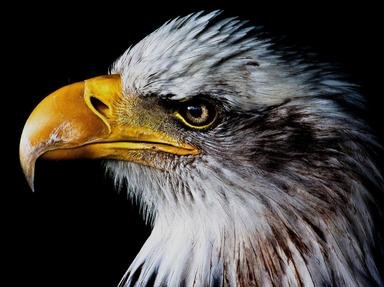Quiz Answer Key and Fun Facts
1. This inhabitant of Yellowstone, although being the largest member of the deer family, is relatively small in number within the park. To which 6.5 ft member of the genus "Alces" am I referring?
2. Yellowstone's control over the population of some of its wildlife can be a hindrance to others. Which big cat, the largest found in Yellowstone park, decreased in number rapidly in the early 20th century due to their removal from the park?
3. There are many birds present in Yellowstone. Which bird, recognisable to many Americans, has its breeding patterns particularly closely monitored by the park managers?
4. Yellowstone's rivers and lakes contain 91% of the world's population of Yellowstone cutthroat trout and so the conditions in the park must be closely monitored to preserve this sub-species. This meant that once again aggressive species control had to be brought in after a non-native fish was introduced to Yellowstone. What type of fish was this?
5. One of Yellowstone's most recognisable animals is the bighorn sheep. You may have gathered from its name that this sheep has rather large horns. What are these horns primarily used for?
6. There are two types of bear which can be found in Yellowstone National Park. One is the large grizzly bear. Which smaller bear is the second?
7. Yellowstone is the only place in the lower 48 states of America where a bison population has existed since prehistoric times. This is largely due to the adaptations of the bison to the peculiar Yellowstone climate. Its broad head and horns allow the bison to do what?
8. Many wolves were killed in Yellowstone in the 18th and 19th centuries for predator control and by 1970 no packs could be found in the park. Which other North American National Park did wild wolves migrate into from Canada, thus helping to re-establish the Rockies' wolf population?
9. Which Yellowstone resident is, over distance, the fastest land animal on the planet? It is noted for its striking dark brown and white markings and the ability to "fly" across the glacial plains of Yellowstone.
10. At the entrance to Yellowstone National Park, which of the animals in this quiz is depicted on "Yellowstone" sign?
Source: Author
doublemm
This quiz was reviewed by FunTrivia editor
crisw before going online.
Any errors found in FunTrivia content are routinely corrected through our feedback system.

